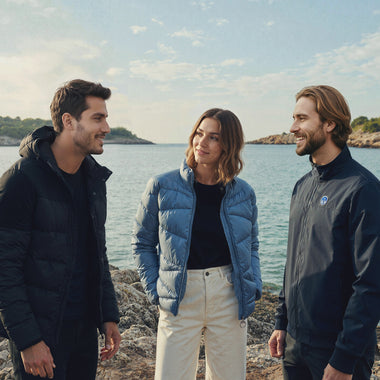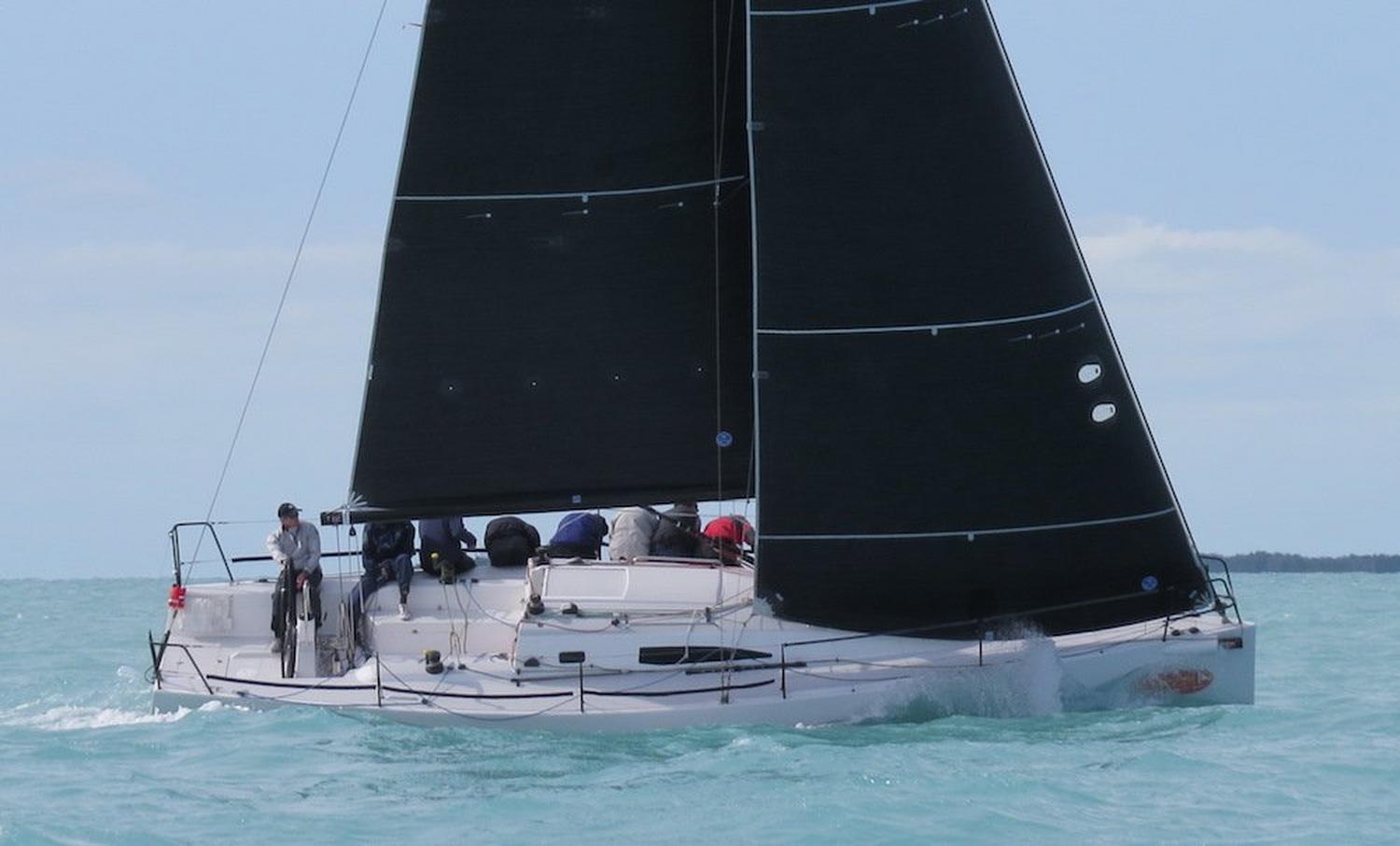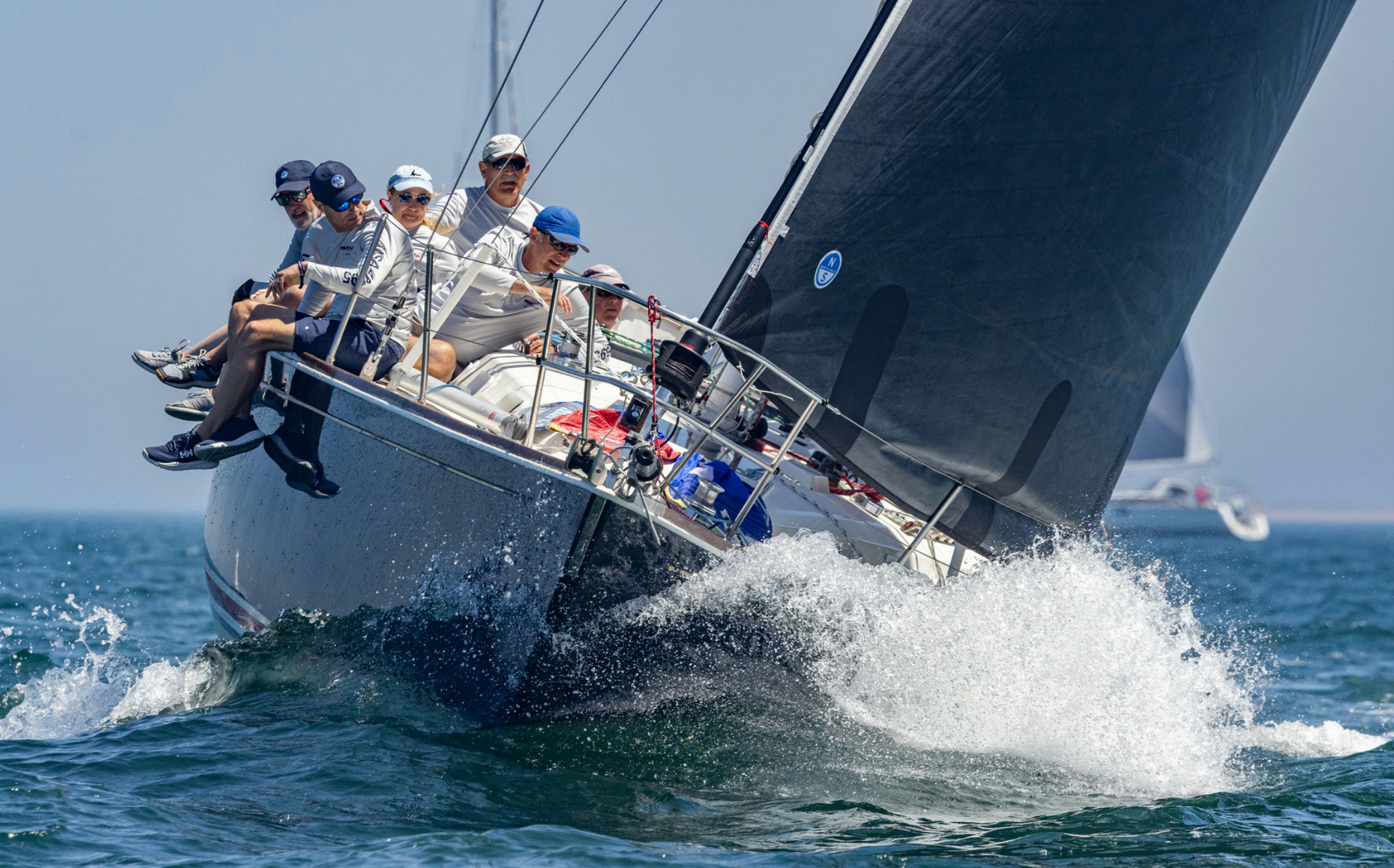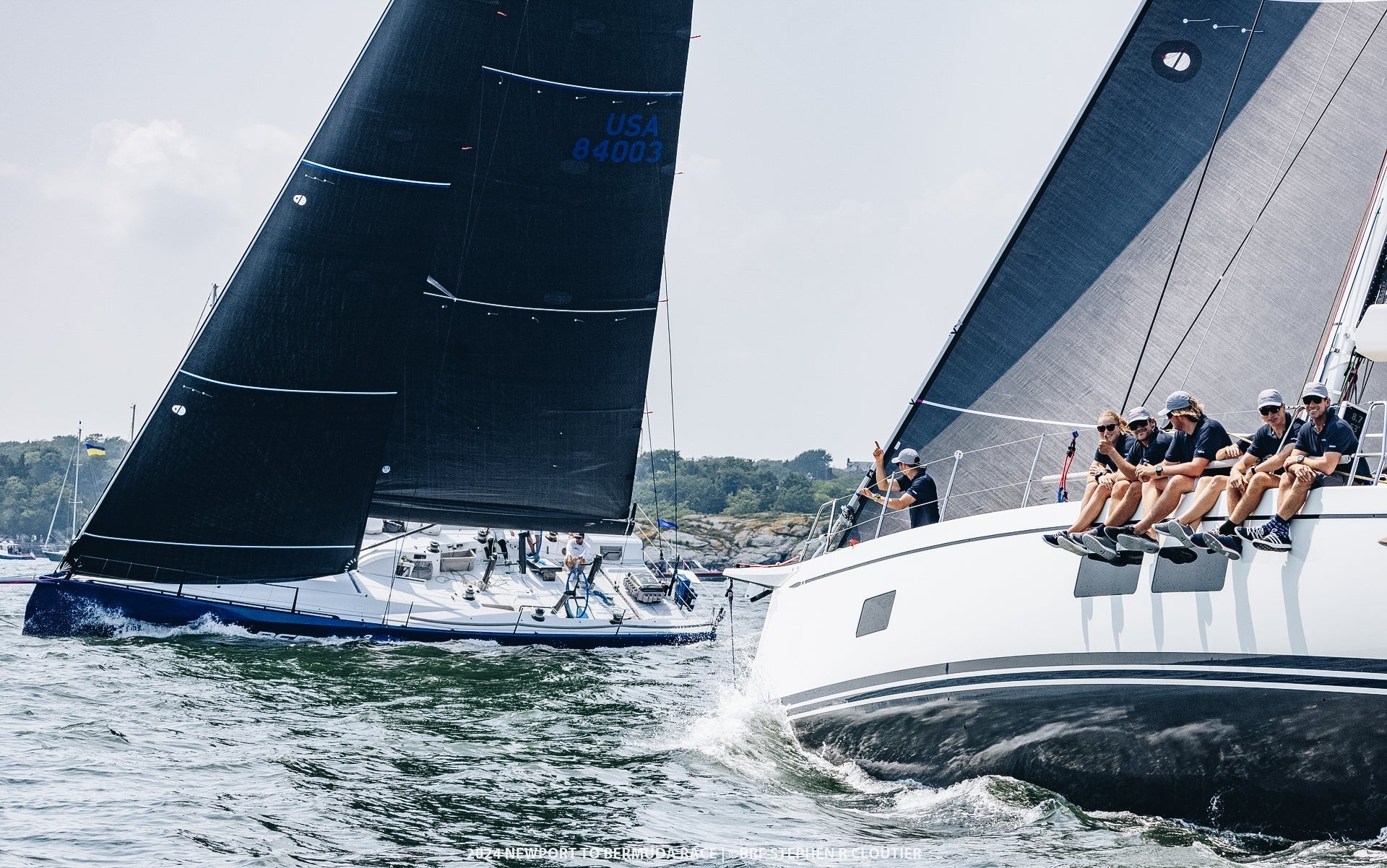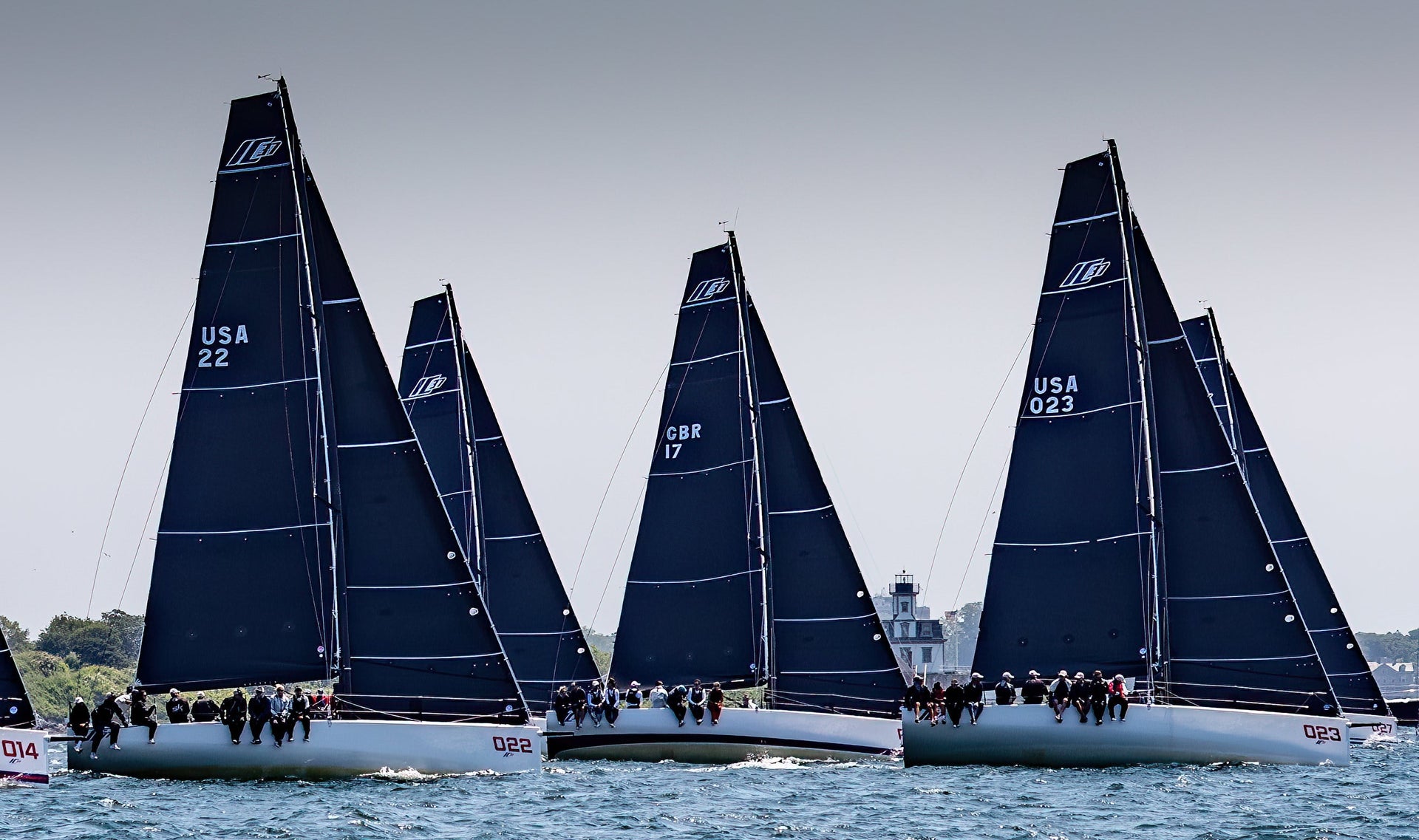THE KEY TO KEY WEST
North Sails clients won 8 out of 13 classes in Key West, including Melges 24, J/70, Farr 280, ORC 1, ORC 2, Performance Cruising, and Multihull. With seven bullets in nine races, Peter Wagner’s team on J/111 Skeleton Key dominated the class Midwinter championship by 14 points.
“We are from San Francisco so big breeze is clearly familiar to us.” And for Peter Wagner and his crew on Skeleton Key, going fast through wind and chop were clearly important skills at the 2016 edition of Key West Race Week. The team posted no finish worse than second over the weeklong event.
STARTS AND BOAT SPEED
When asked what the biggest factors were in their victory, Wagner’s response was hardly unusual. “We were able to start cleanly with strong control of our lane in eight of nine races. We then had strong enough upwind boat speed to turn these starting opportunities into defensible leads.”
And even when they had trouble on the starting line, Skeleton Key was able to grind back. “In race nine, we got a bit surprised at the start by a late-forming crowd at the boat, and had to bail out to the right side shortly after the gun. The left corner paid massively on that first beat, and we spent the race clawing back. We felt fortunate to salvage a second, passing Wooton on the last leg.”
SAILS USED
Skeleton Key sailed with their North Sails 3Di Main and Medium/Heavy jib for the entire regatta, except for one beat when they used a 3Di RAW Light jib. Downwind they used an A2 spinnaker, except for one run sailed with the A4.
Wagner calls the 3Di Medium/Heavy “a great sail which has been our workhorse throughout the event.” Tactician Seadon Wijsen adds, “The 3Di Medium/Heavy jib we used is very versatile. We used it from 9-21 knots and it was fast, especially in the higher wind ranges. As a testament of the 3Di product durability, this sail had been used for five previous regattas and practice days and still looked and performed great.”
Of course great boat speed is not the only factor to winning a big regatta, and Wagner and Wijsen both credit teamwork with keeping them in front of the fleet. “The crew work was flawless all regatta long,” said Wagner, “which didn’t give the rest of the fleet any openings to capitalize on.”
Wijsen agreed. “We practiced one day in San Francisco in October and the Saturday before the regatta began. Our team was a little erratic and nervous early but after winning the first two races everyone settled down and focused on their roles. We just got stronger after that.”
TRIM & TUNING
Saturday’s practice in 9-13 TWS helped the Skeleton Key crew adjust to Key West conditions. “I thought the rig was a little loose on Saturday, so we adjusted for Monday to +14 full turns on uppers and +5 full turns on D1’s from our tuning guide BASE setting,” recalled Wijsen. “We sailed Tuesday and Thursday at +9 full turns and +3 full turns from BASE. I felt the tight rig being good on the J/111 even in chop. We did not adjust the headstay during the event and I am not sure we would ever adjust the headstay because the boat seems to like the BASE rake in all conditions.”
“Jib halyard we kept a little tighter than normal to get the mid leech a little tighter. Because the waves didn’t match the wind direction, we set the boat up asymmetric on traveler, mainsheet tension, in-hauler and jib sheet tension. Twisted and looser on port into the chop and flatter, tighter on starboard for pointing in flatter water.”
J/111 THOUGHTS
This was Wagner’s first year in the J/111, and his first KWRW. “What we have learned in our relatively brief experience in the J/111 is that upwind performance is all about boat speed,” he explained. “The boat will point very nicely once it is up to speed, and it’s very important to maintain strong flow in order to establish height, especially in chop. Sounds obvious I know! Doing it well requires good coordination between mainsheet trimmer and helmsman, as well as creativity on more open jib sheeting angles depending on the sea state.”
The next event for Skeleton Key will be Charleston Race Week in April. “We would encourage all J/111s to come join in what promises to be a fantastic event,” Wagner said. “The fleet momentum is building, and this is a simply great group of sailors to race with.”
Wagner also complimented one sailor in particular. “Seadon Wijsen called superb tactics throughout the series, staying patient and always putting us in position to leverage our speed edge.” And Wijsen had his own praise for the owner: “Peter really did a great job in making sure there was nothing we wished we had or had done before the racing began.”
With the help of North Sails Seadon Wijsen and sail designer Phillip Williamson from North Sails, a new J-111 Tuning Guide is under development and will be uploaded to the North Sails Offshore One Design J/111 webpage next week.
Questions on the event or North’s J/111 sail inventory can be directed to Seadon or Phillip:
Seadon Wijsen: seadon.wijsen@northsails.com | +1 415 339 3000
Phillip Williamson: phillip.williamson@northsails.com
